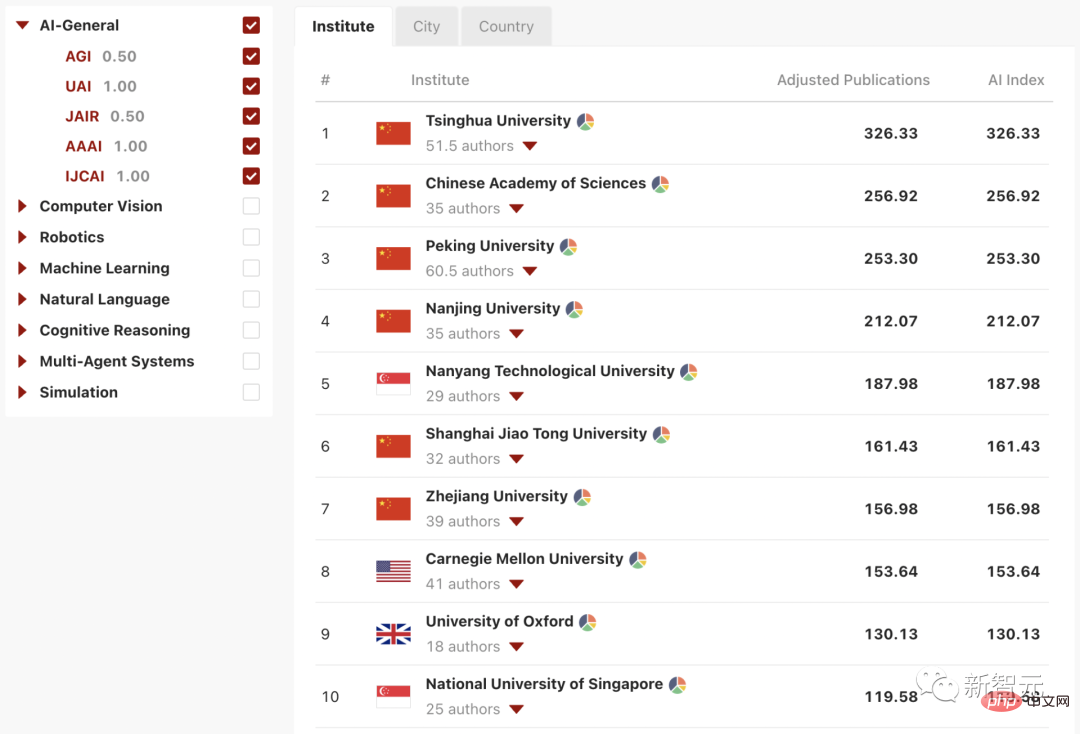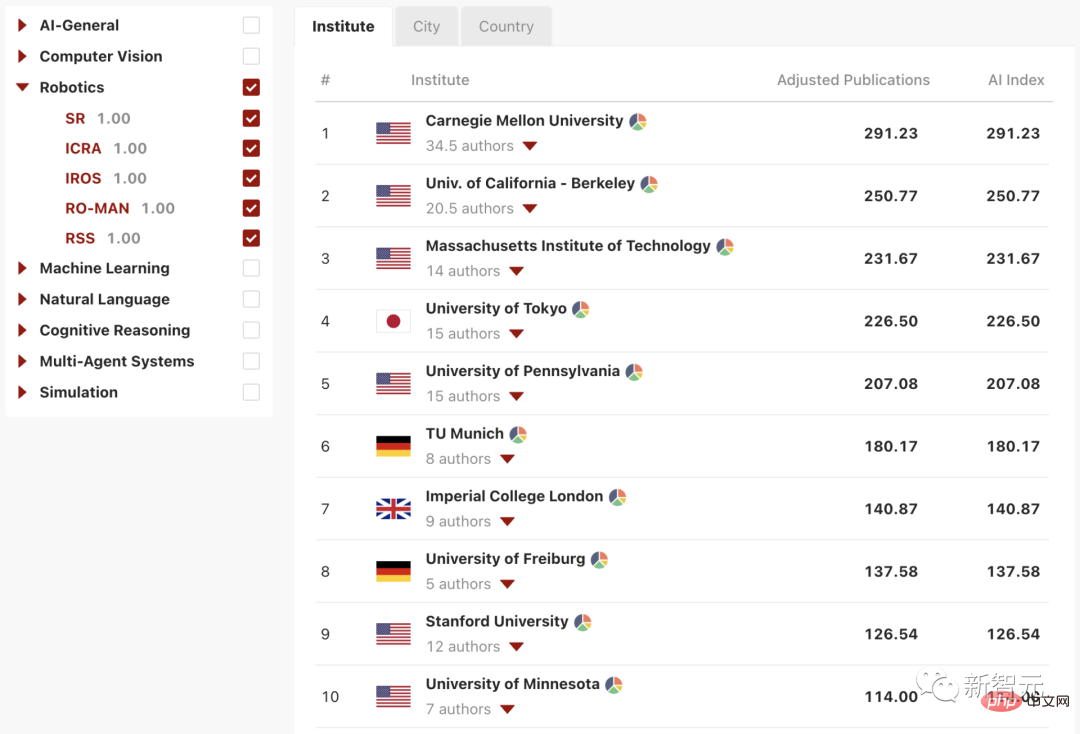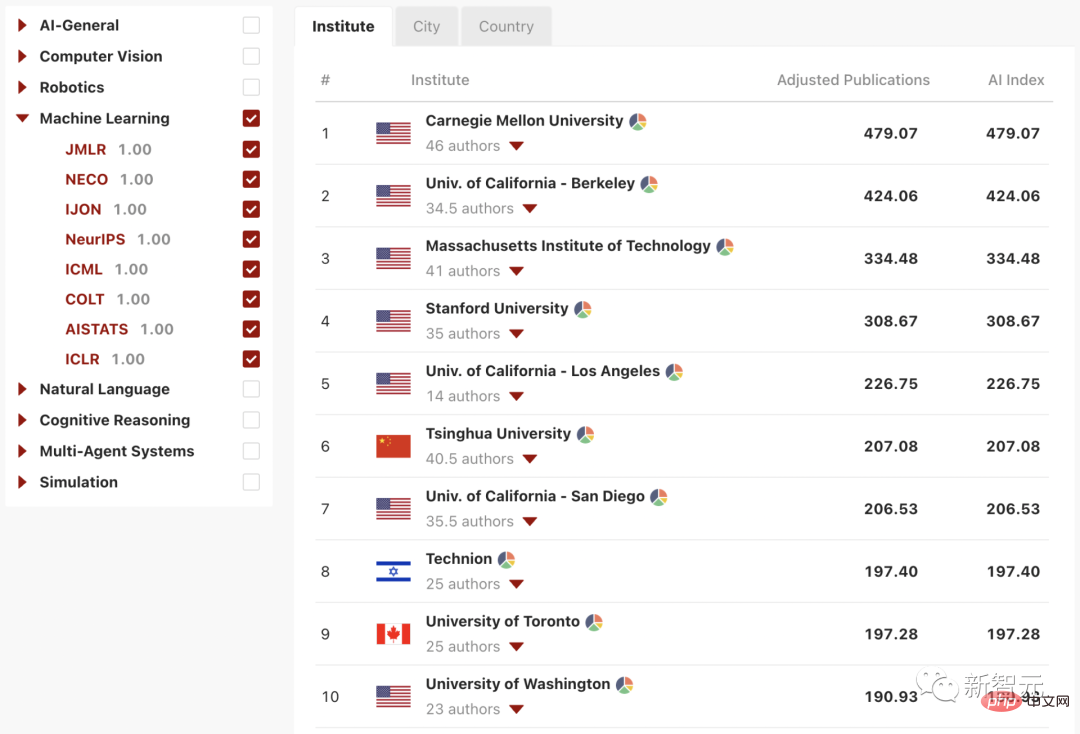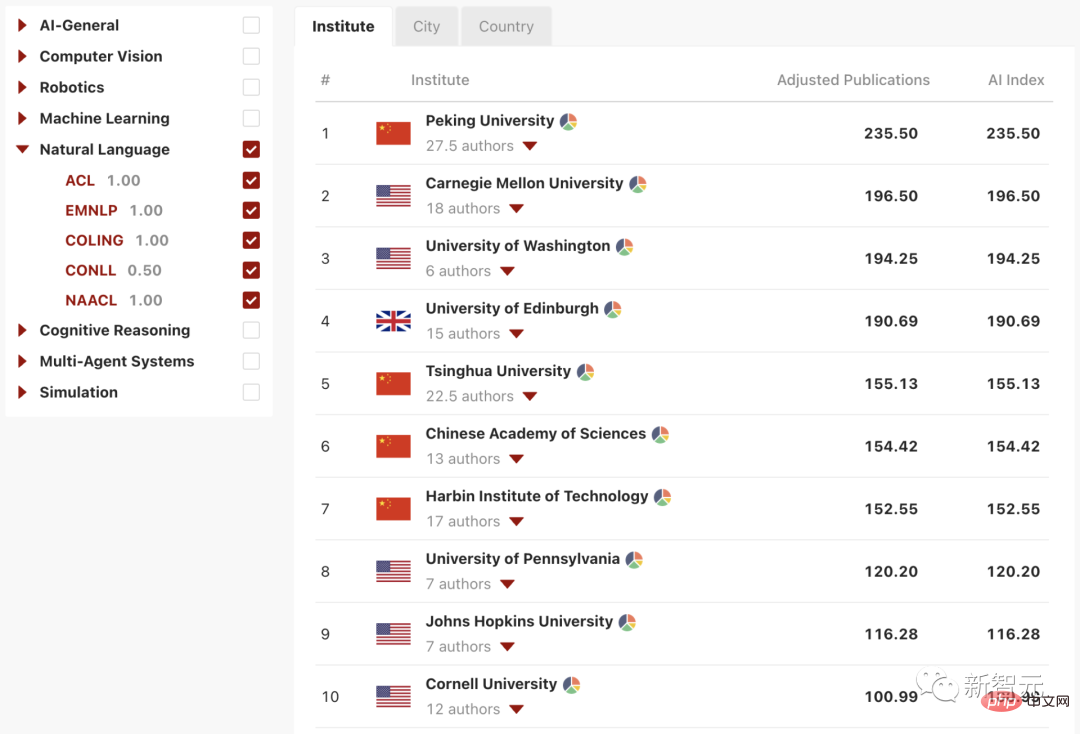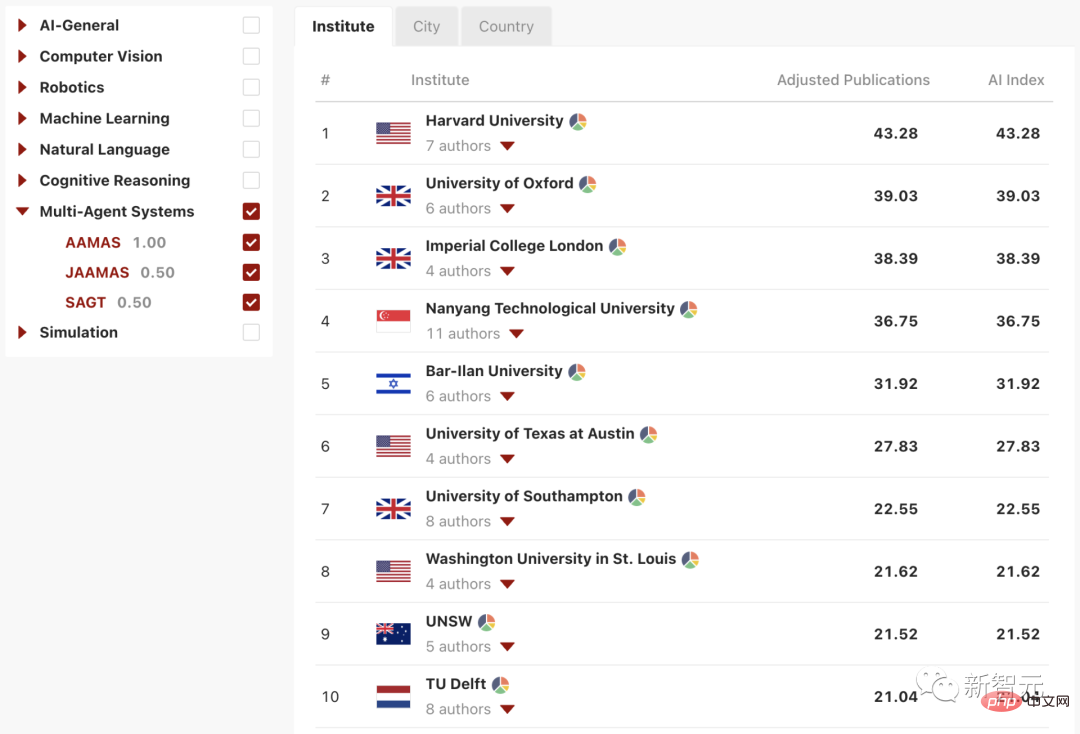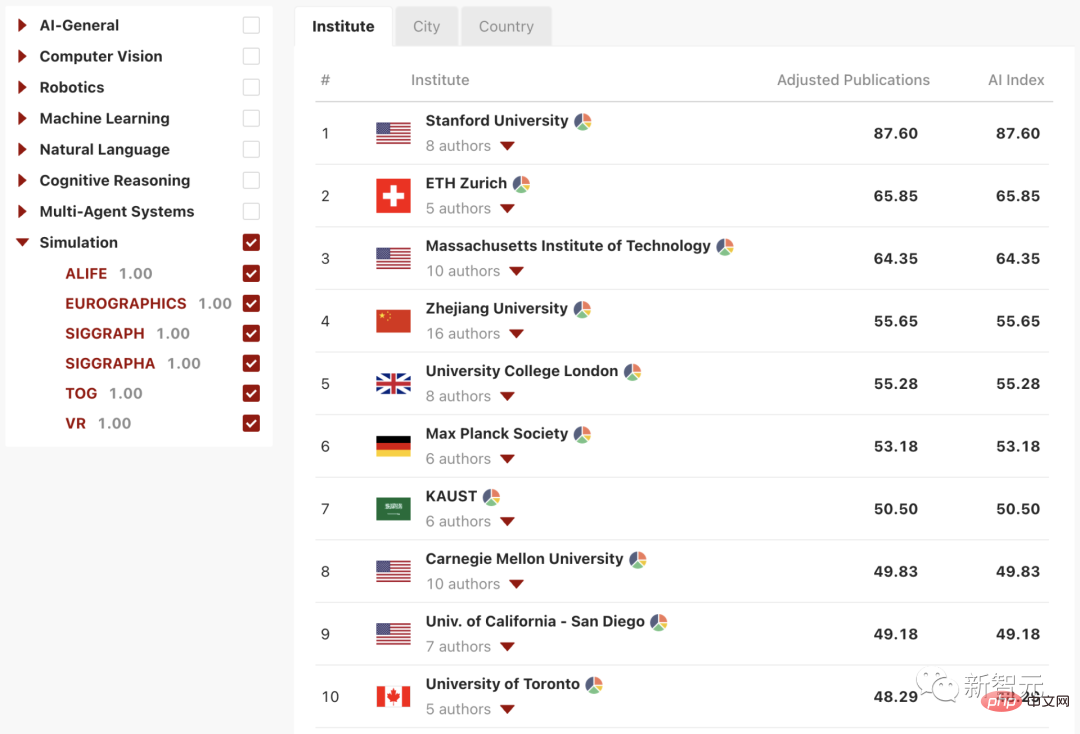AIRankings world university AI rankings released
It’s the college entrance examination season again.
I remember that when I was taking the college entrance examination, there was such a popular saying.
That is, "Look at the school for undergraduates, and the major for graduate school."
There may not be anything wrong with this before I say it.
However, with the rapid development of science and technology in recent years, some majors related to front-end technology may start from the undergraduate level.
The most popular major at the moment is artificial intelligence.

Just recently, AIRankings released a ranking of AI-related majors in global universities.
Let’s take a look at which universities and institutions are on the list.
AI World Ranking: Top Three in Beiqing
AIRankings ranking combines research over the past ten years, as well as general artificial intelligence, computer vision, robotics, machine learning, natural language processing, and cognitive reasoning , multi-agent systems and simulation performance in these eight directions.
Carnegie Mellon University won the first place with a huge advantage. Peking University and Tsinghua University deservedly ranked among the top five in the world, ranking 2nd and 3rd respectively.
The University of California, Berkeley and the Massachusetts Institute of Technology followed closely, ranking 4th and 5th respectively, while the Chinese Academy of Sciences ranked 6th.
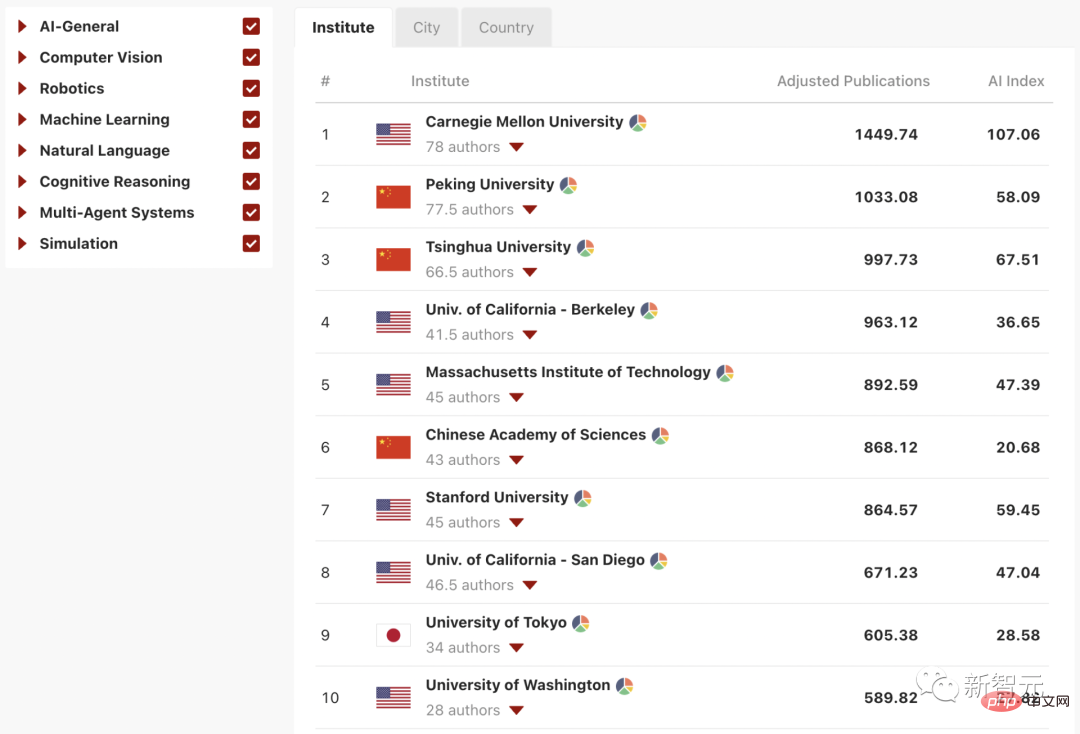
Qingbei/Beiqing, who "love and kill each other", are still very close in this ranking.
Judging from the revised number of AI papers, Peking University leads; while judging from the AI index alone, Tsinghua University is slightly better.
However, after breaking down the various projects, we can find that the two schools have their own emphasis.
For example, Peking University scores higher in computer vision and natural language processing, and Tsinghua University performs well in general artificial intelligence and machine learning.
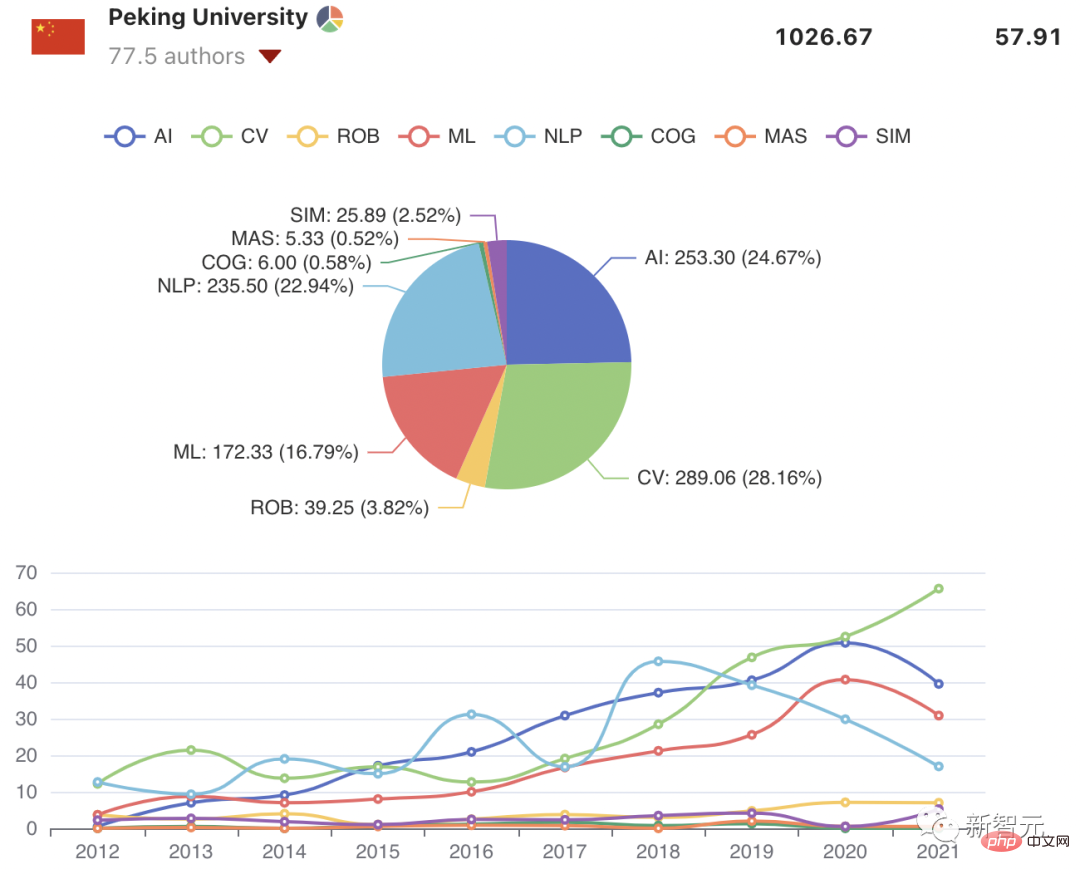
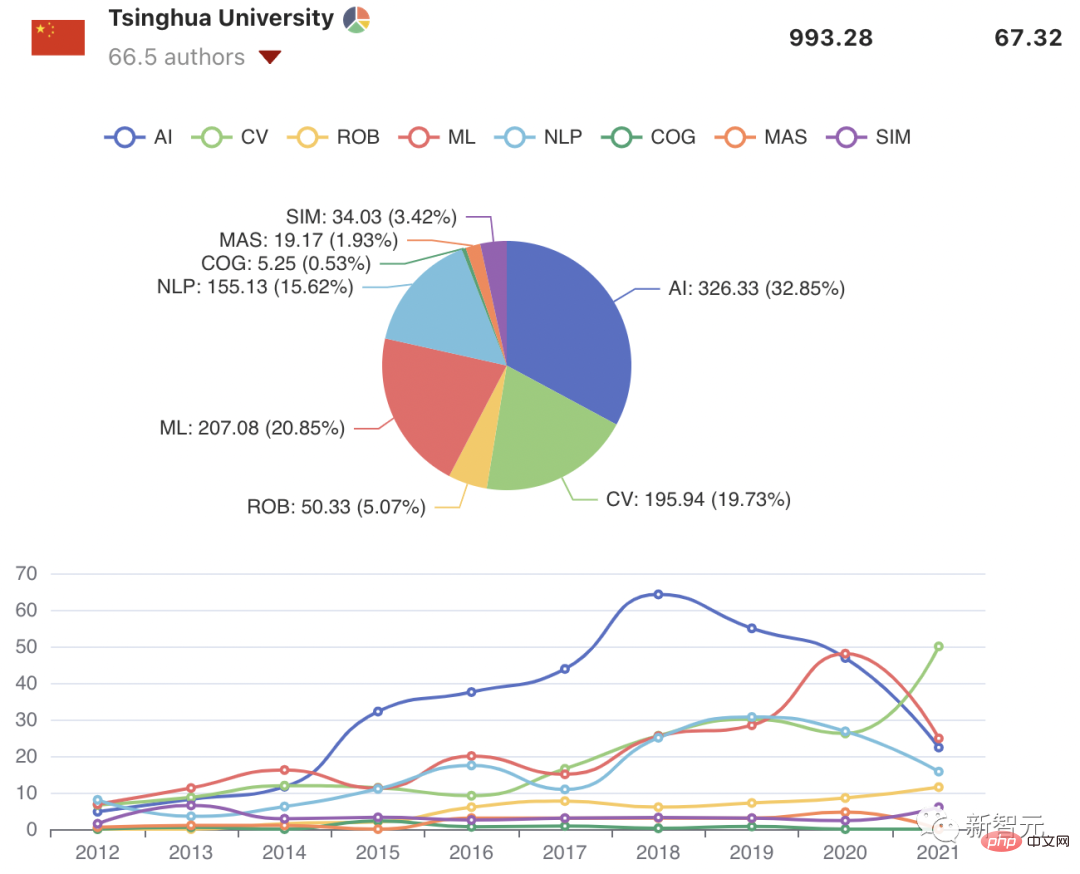
Other schools in the top 100 in the world are as follows:
Ranking |
College |
Number of corrected papers |
AI Index |
15 |
The Chinese University of Hong Kong |
546.10 |
20.78 |
| ##20 | Zhejiang University | 486.92 | 20.99 |
| Shanghai Jiao Tong University | 469.77 | 18.70 | |
| 南京大学 | 424.89 | 14.07 | ##29 |
HKUST |
418.76 |
##19.97 |
35 |
| Fudan University | 360.20 | 10.62 | |
| ##43 | Northwestern Polytechnical University | 318.07 | 7.08 |
| Sun Yat-sen University | 309.96 | 8.40 | |
| Harbin Institute of Technology | 300.69 | 7.12 | #58 |
Beijing University of Aeronautics and Astronautics |
267.45 |
10.70 |
61 |
University of Electronic Science and Technology of China |
254.22 |
##7.55 | |
| ##65 | University of Science and Technology of China | 248.97 | 12.44 |
| City University of Hong Kong | 177.37 | 10.31 | |
| 西湖University | 167.74 | ##4.30 |
The above is the detailed content of AIRankings world university AI rankings released. For more information, please follow other related articles on the PHP Chinese website!

Hot AI Tools

Undresser.AI Undress
AI-powered app for creating realistic nude photos

AI Clothes Remover
Online AI tool for removing clothes from photos.

Undress AI Tool
Undress images for free

Clothoff.io
AI clothes remover

AI Hentai Generator
Generate AI Hentai for free.

Hot Article

Hot Tools

Notepad++7.3.1
Easy-to-use and free code editor

SublimeText3 Chinese version
Chinese version, very easy to use

Zend Studio 13.0.1
Powerful PHP integrated development environment

Dreamweaver CS6
Visual web development tools

SublimeText3 Mac version
God-level code editing software (SublimeText3)

Hot Topics
 1377
1377
 52
52
 How to create an oracle database How to create an oracle database
Apr 11, 2025 pm 02:33 PM
How to create an oracle database How to create an oracle database
Apr 11, 2025 pm 02:33 PM
Creating an Oracle database is not easy, you need to understand the underlying mechanism. 1. You need to understand the concepts of database and Oracle DBMS; 2. Master the core concepts such as SID, CDB (container database), PDB (pluggable database); 3. Use SQL*Plus to create CDB, and then create PDB, you need to specify parameters such as size, number of data files, and paths; 4. Advanced applications need to adjust the character set, memory and other parameters, and perform performance tuning; 5. Pay attention to disk space, permissions and parameter settings, and continuously monitor and optimize database performance. Only by mastering it skillfully requires continuous practice can you truly understand the creation and management of Oracle databases.
 How to create oracle database How to create oracle database
Apr 11, 2025 pm 02:36 PM
How to create oracle database How to create oracle database
Apr 11, 2025 pm 02:36 PM
To create an Oracle database, the common method is to use the dbca graphical tool. The steps are as follows: 1. Use the dbca tool to set the dbName to specify the database name; 2. Set sysPassword and systemPassword to strong passwords; 3. Set characterSet and nationalCharacterSet to AL32UTF8; 4. Set memorySize and tablespaceSize to adjust according to actual needs; 5. Specify the logFile path. Advanced methods are created manually using SQL commands, but are more complex and prone to errors. Pay attention to password strength, character set selection, tablespace size and memory
 How to write oracle database statements
Apr 11, 2025 pm 02:42 PM
How to write oracle database statements
Apr 11, 2025 pm 02:42 PM
The core of Oracle SQL statements is SELECT, INSERT, UPDATE and DELETE, as well as the flexible application of various clauses. It is crucial to understand the execution mechanism behind the statement, such as index optimization. Advanced usages include subqueries, connection queries, analysis functions, and PL/SQL. Common errors include syntax errors, performance issues, and data consistency issues. Performance optimization best practices involve using appropriate indexes, avoiding SELECT *, optimizing WHERE clauses, and using bound variables. Mastering Oracle SQL requires practice, including code writing, debugging, thinking and understanding the underlying mechanisms.
 How to add, modify and delete MySQL data table field operation guide
Apr 11, 2025 pm 05:42 PM
How to add, modify and delete MySQL data table field operation guide
Apr 11, 2025 pm 05:42 PM
Field operation guide in MySQL: Add, modify, and delete fields. Add field: ALTER TABLE table_name ADD column_name data_type [NOT NULL] [DEFAULT default_value] [PRIMARY KEY] [AUTO_INCREMENT] Modify field: ALTER TABLE table_name MODIFY column_name data_type [NOT NULL] [DEFAULT default_value] [PRIMARY KEY]
 What are the integrity constraints of oracle database tables?
Apr 11, 2025 pm 03:42 PM
What are the integrity constraints of oracle database tables?
Apr 11, 2025 pm 03:42 PM
The integrity constraints of Oracle databases can ensure data accuracy, including: NOT NULL: null values are prohibited; UNIQUE: guarantee uniqueness, allowing a single NULL value; PRIMARY KEY: primary key constraint, strengthen UNIQUE, and prohibit NULL values; FOREIGN KEY: maintain relationships between tables, foreign keys refer to primary table primary keys; CHECK: limit column values according to conditions.
 Detailed explanation of nested query instances in MySQL database
Apr 11, 2025 pm 05:48 PM
Detailed explanation of nested query instances in MySQL database
Apr 11, 2025 pm 05:48 PM
Nested queries are a way to include another query in one query. They are mainly used to retrieve data that meets complex conditions, associate multiple tables, and calculate summary values or statistical information. Examples include finding employees above average wages, finding orders for a specific category, and calculating the total order volume for each product. When writing nested queries, you need to follow: write subqueries, write their results to outer queries (referenced with alias or AS clauses), and optimize query performance (using indexes).
 What does oracle do
Apr 11, 2025 pm 06:06 PM
What does oracle do
Apr 11, 2025 pm 06:06 PM
Oracle is the world's largest database management system (DBMS) software company. Its main products include the following functions: relational database management system (Oracle database) development tools (Oracle APEX, Oracle Visual Builder) middleware (Oracle WebLogic Server, Oracle SOA Suite) cloud service (Oracle Cloud Infrastructure) analysis and business intelligence (Oracle Analytics Cloud, Oracle Essbase) blockchain (Oracle Blockchain Pla
 What are the system development tools for oracle databases?
Apr 11, 2025 pm 03:45 PM
What are the system development tools for oracle databases?
Apr 11, 2025 pm 03:45 PM
Oracle database development tools include not only SQL*Plus, but also the following tools: PL/SQL Developer: Paid tool, provides code editing, debugging, and database management functions, and supports syntax highlighting and automatic completion of PL/SQL code. Toad for Oracle: Paid tool that provides PL/SQL Developer-like features, and additional database performance monitoring and SQL optimization capabilities. SQL Developer: Oracle's official free tool, providing basic functions of code editing, debugging and database management, suitable for developers with limited budgets. DataGrip: JetBrains




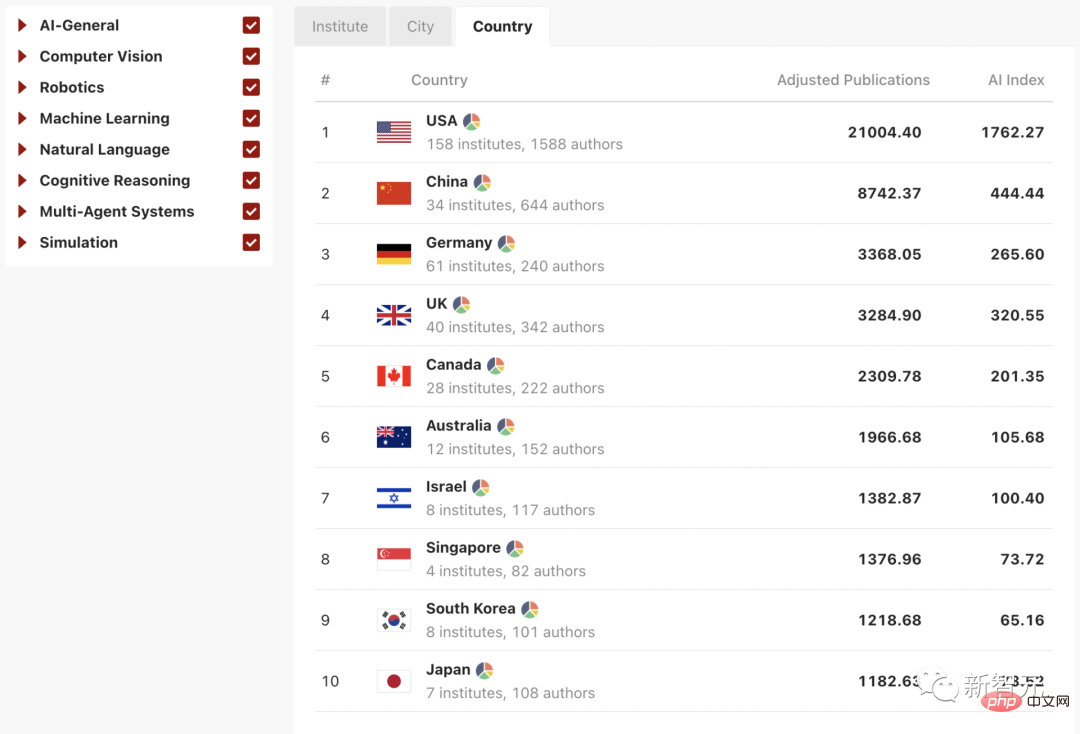
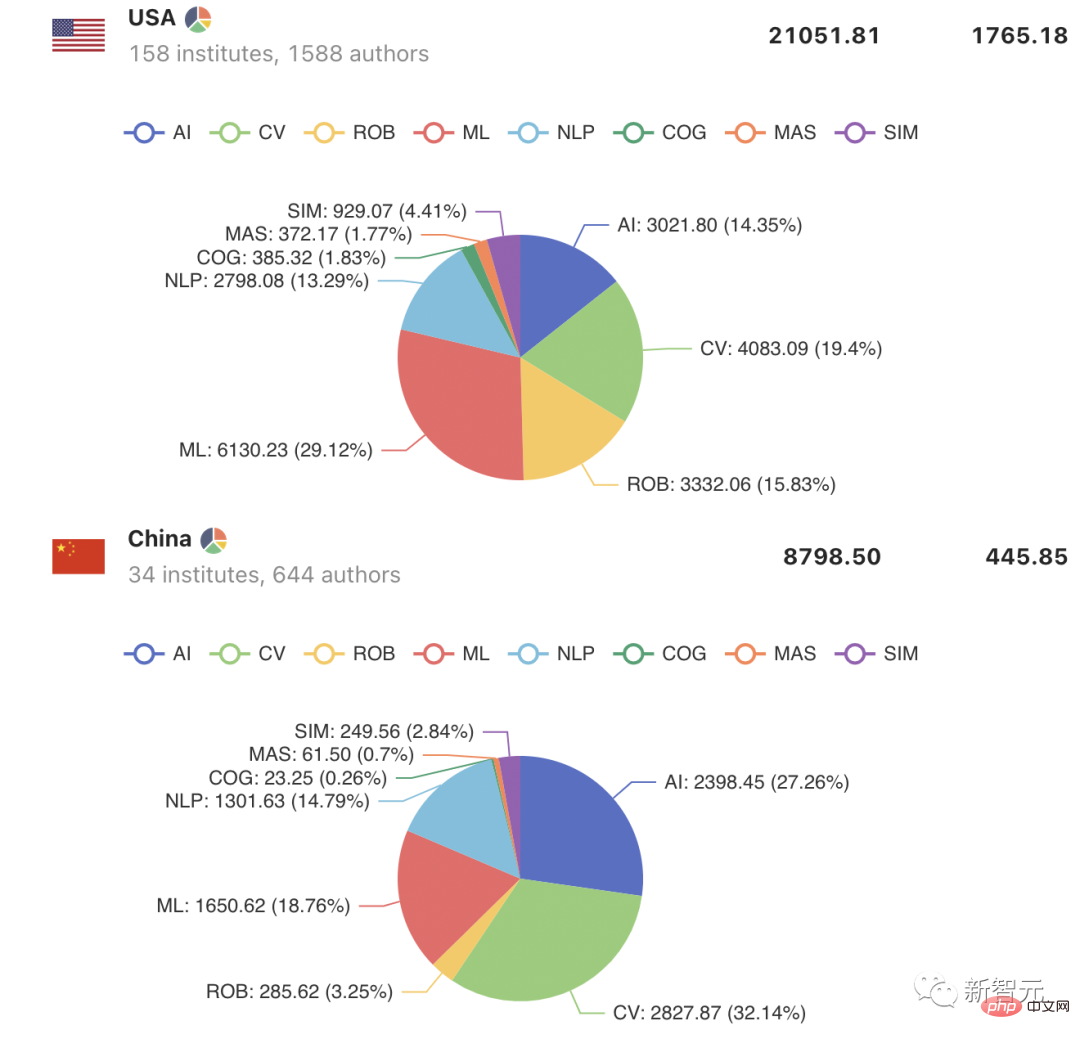

 It is written in the evaluation details that when evaluating authors, each author will receive two points.
It is written in the evaluation details that when evaluating authors, each author will receive two points. 

